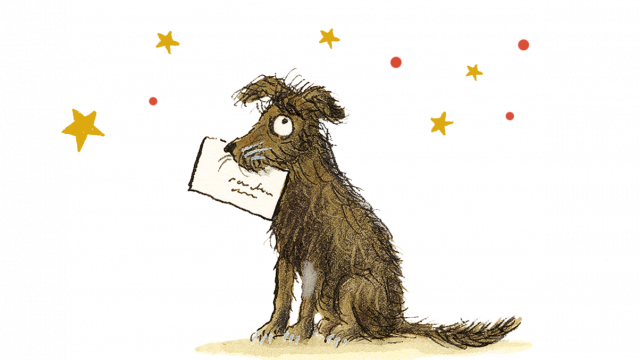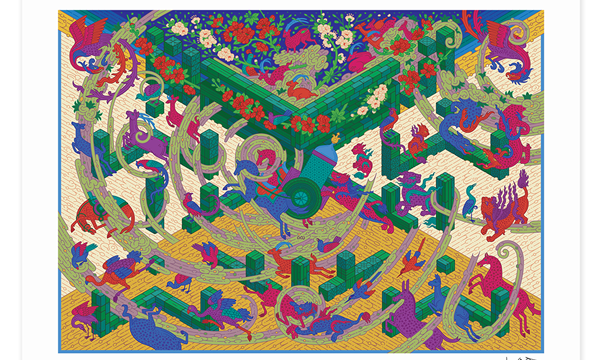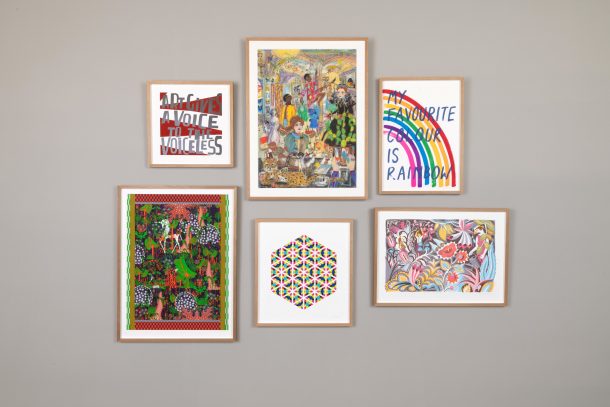
Over the summer of 2020 we commissioned a new collection of limited edition artist prints, V&A Select, for our shop. The six artists were chosen for the way their work connects with the museum and excitingly each of these works has now been added to the V&A’s permanent collection. V&A Select launched online in November and is on display in the Main Shop, patiently waiting for when our visitors can return.
The six prints are wonderfully varied in style, a pleasing reflection of the V&A collection and the individual way each artist relates to the museum. I’m a Remarkable Woman by Freya Pocklington celebrates female makers in the V&A archive, Kustaa Saksi’s intricate screen-print Rendezvous is a dream-like interpretation of a 500-year-old millefleurs tapestry. Clare Curtis’ fantasy garden Jardin de Suzanne is inspired by Art Deco pattern. Artist Zarah Hussain’s practice is rooted in her study of Islamic geometry and explores how symmetry, repetition and colour create a sense of balance and calm for both maker and viewer. ART GIVES A VOICE TO THE VOICELESS is a new text piece by Bob and Roberta Smith, it demands our attention and calls on us to recognise the importance of creativity, and the unique way that art can develop the human voice. Lastly, My Favourite Colour is Rainbow, a 9 colour screen-print by Adam Brigland stands for joy, beauty, colour, play and hope.
Annabelle Cruickshank, formerly the Senior Buyer at the V&A, headed up the project and spoke to two of the artists, Freya Pocklington and Kustaa Saksi, on their process and inspiration behind their prints.
I’m a Remarkable Woman limited edition print by Freya Pocklington
Annabelle: Can you tell me more about the concept behind the print?
Freya: The title I’m a Remarkable Woman is a reference to a line from a letter written by May Morris to George Bernard Shaw in 1936; ‘I’m a remarkable woman, always was, though none of you seemed to think so’. It’s set in The Gamble Room, home to the V&A’s iconic café, and features objects and makers that I discovered during my research into the V&A archives. So there is Mary, Queen of Scots who created embroideries with Bess of Hardwick, Josephine Baker, dancer, muse and animal lover, May Morris, a leading figure of Arts and Crafts Movement and twentieth-century textile designer Althea McNish.
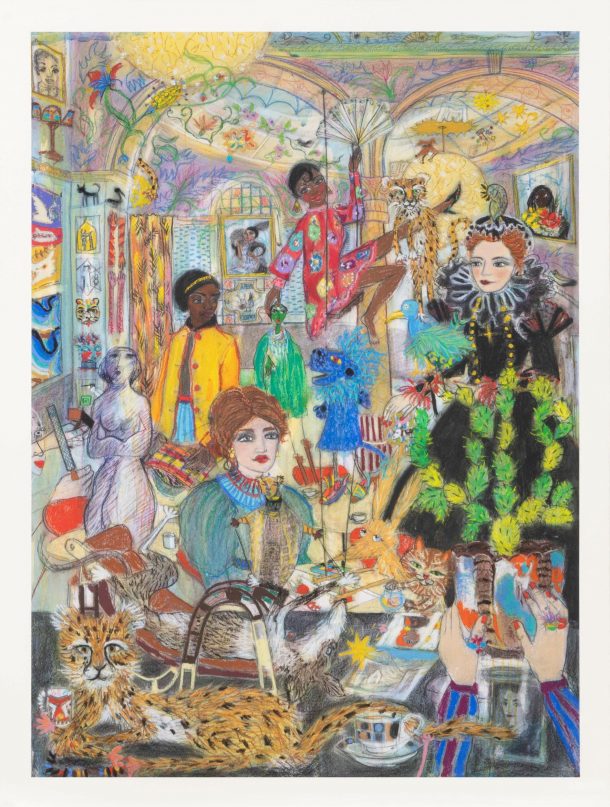
Selecting objects to include in your print involved considerable research into the archives. In a normal year this would have meant spending time at the Museum but instead you had to access the collections online. Can you tell me a bit more about this experience?
I knew I wanted to create an image that celebrated women makers in the V&A. This presented a challenge; the online archive is not designed to search for objects made exclusively by women. I had several well-known artists in mind, but I wanted to make the selection as broad and varied as possible. To work around this, I would search for a type of object and then keep scrolling through until I found something made by a woman! It was a lengthy but really rewarding process, a journey of discovery for me resulting in some unexpected finds and introducing me to new artists.
The artwork is incredibly detailed, once you had your research did you carefully plan what to include and where?
I decided to set the scene in the café, a place of activity, chat, friendship, and life, I spent some time planning this element, so it looked right. Once I had that base, my selection of objects and people seemed to transfer spontaneously from the research and populate the artwork as I drew. I am fascinated by objects out of context and creating new narratives for these through my work. I like to imagine that this gathering is taking place in the Museum now. I made a detailed information map that is included with the print.
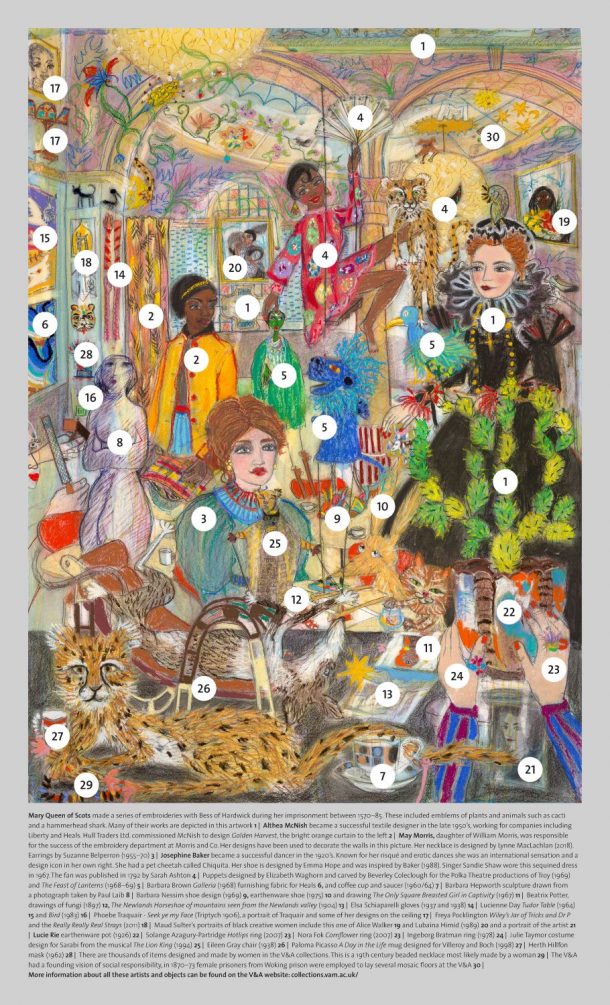
Who or what has particularly stuck with you from your research?
I did not know a great deal about Josephine Baker other than the description of her as a muse. It was so interesting to learn more of her story, she strikes me as an incredibly positive person with an inspiring attitude to life, her pet cheetah Chiquita appears alongside her in the artwork. Another favourite was Mary, Queen of Scots and Bess of Hardwick and the embroideries they created. These included a Hammerhead shark — the idea of these imprisoned women working together and imagining what this creature might look like really captured me.

When it becomes possible to visit the Museum again what would you like to revisit?
There are many galleries I would like to see; the Japanese gallery has always been a favourite but I would like walk through some of the less frequented spaces, like the ironwork gallery, to marvel at what has been preserved and displayed there. Most of all though I look forward to feeling relaxed in a public space again surrounded by people and sitting and watching. I love observing how people move through a gallery, those that walk through quickly and those that linger.

Freya is currently studying for a PhD at the Royal College of Art, examining the role of fine art portraiture within narrative medicine. She has completed residencies at The Royal Scottish Academy, Scottish Arts Council, The Florence Trust, Somerset House, West Dean College and The National Trust. She exhibits regularly in the UK and abroad. She has work in The British Museum, V&A, Chichester Cathedral, Edinburgh College of Art and Royal Scottish Academy collections.
Rendezvous limited edition print by Kustaa Saksi
Annabelle: Your print is based on an early 16th century millefleurs tapestry in the V&A collection and reimagines the narrative of the tapestry as a meeting between a Unicorn and the Egyptian god Horus in a field of flowers. You speak about a connection between the jacquard weaving and the screen-printing process you used for this print, could you say a little more about this?
Kustaa: Both printmaking and weaving have their own limitations, which can be equally inspiring. As the colour palettes are usually limited to a certain number of colours it’s intriguing to find new ways to express colour and shapes with different methods – optically mixing ink, or mechanically twisting yarns to create new colours. After all, the laws of colour theories work in the same way in these very different disciplines.

Printed at Jealous Print Studio, London.
I think it is interesting to think about the layering involved in image making for both. How do they relate and how are they different?
In a way, both printmaking and Jacquard weaving work by adding layers and simultaneously hiding other layers. I’m often working on chunky, multi-layered constructions on my Jacquards that show different layers of materials with varying qualities and textures. I’m creating pockets, where some of the yarns can run freely and some areas where all of the yarns are tightly packed together. It can create very three-dimensional surfaces. Equally, it’s fascinating to see the unexpected results when the inks create layers on each other, forming new colour combinations.

© Victoria and Albert Museum
What would you say about the role of storytelling in your work? This print uses a millefleurs tapestry in the V&A collection as a starting point. What interests you about this piece?
I often use a story as a starting point for my work and the result is my personal interpretation of it. The millefleurs tapestry at the V&A is naturally full of symbolism on so many different levels. I’m interested in its classical beauty and the relationships of its characters.
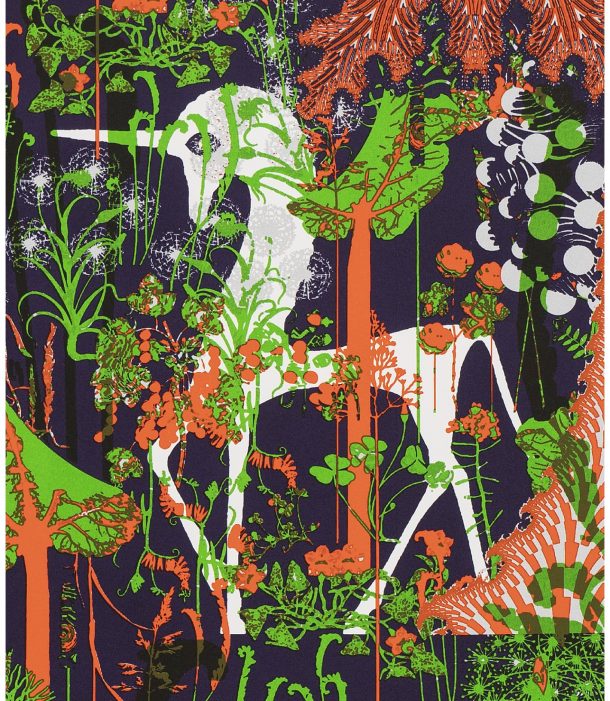
We have all been unable to spend time in museums over the past year, what will be the first thing you want to go and see once things are open again?
When The Netherlands opens up again, I think I will start locally. I will probably go and visit Teylers Museum in Haarlem, established in 1778, for its intriguing collection of art and natural history, and its beautiful library and impressive room of fossils.
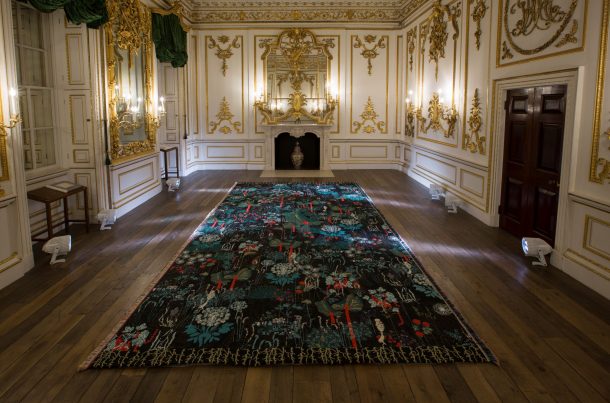
Kustaa Saksi is a Finnish artist and designer based in Amsterdam, he specialises in graphic storytelling through patterns, in particular through Jacquard weaving. His work depicts ideas of nature seen from the abstracted edge of perception, creating fantastical worlds of playful, paradoxical, psychedelic atmospheres and troubling yet inviting shapes.
In 2020 Saksi was shortlisted for the V&A Illustration awards and in 2017 was commissioned by the V&A in collaboration with IC-98 for Collecting Europe resulting in A World in Waiting, an installation in the Norfolk House Music Room. As well as the V&A Kustaa has exhibited at the Cooper Hewitt Museum, San Jose Museum of Art, Textiel Museum, Design Museum Helsinki, Museo Poldi Pezzoli, Kunsthall Stavanger and Helsinki Kunsthall. He has held solo exhibitions at galleries in New York, London, Paris, Hong Kong, Taipei, Madrid, Brussels, Helsinki and Amsterdam.
Each V&A Select print is available in a limited edition of 75.
